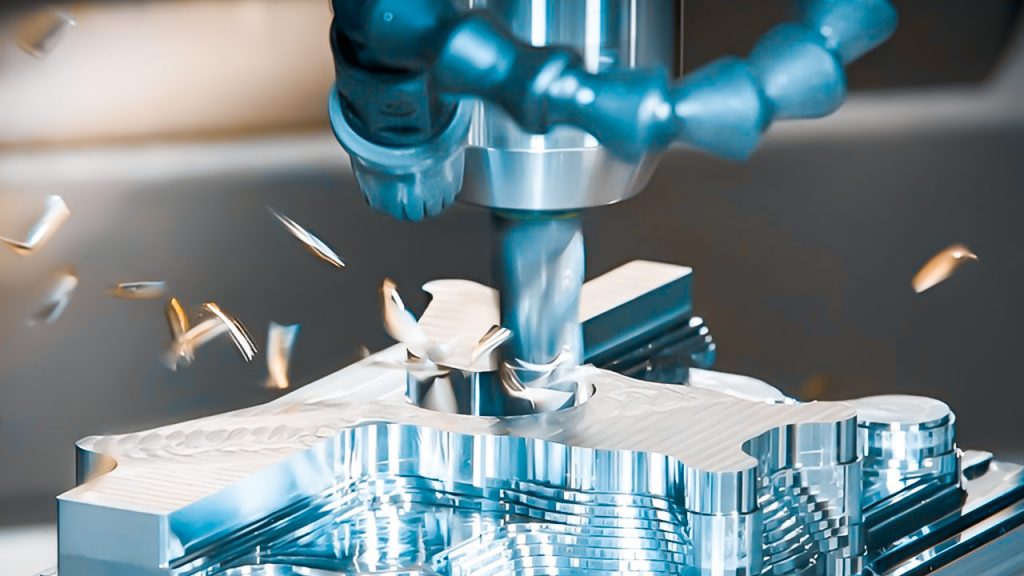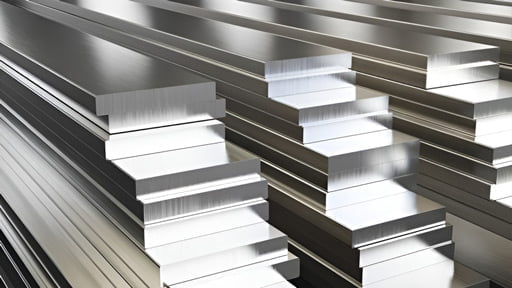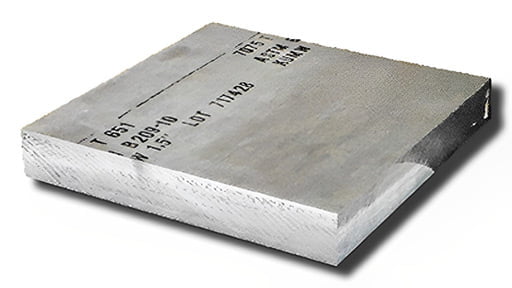Undoubtedly, Aluminum is one of the most extensively utilized metals that have contributed to developing our modern world’s capabilities. Aluminum alloys allow the fabrication of a wide variety of in-demand products. Since Aluminum alloys are one of the simplest materials to work with, they are the material of choice for a multitude of applications in a wide range of industries, such as Aluminum machining.

In addition to its outstanding machinability, Aluminum is available in a vast array of alloys and grades that are well-suited to meet a broad range of needs, from the manufacture of rapid prototypes to the execution of precise applications. CNC It is impossible to deny the many benefits of Aluminum machining, including cost savings and increased material quality.
The extent to which Aluminum alloys may be machined relies on the mechanical properties of the alloys and the machining techniques employed on them. It is thought that other metals, such as steel and titanium, are less machinable than Aluminum alloys. This is owing to the malleability and ease with which Aluminum can be chipped and molded.
Aluminum is abundant and very affordable. They are an ideal material for use in both prototype and production runs. Aluminum machining extends the life of the equipment used to process it, resulting in cost savings for manufacturers.
What is Aluminum Machining?
Aluminum Machining is a subtractive manufacturing process, which removes material from a workpiece to create the desired component or product whilst utilizing Aluminum. It is done to enhance the quality of the component or final product. It is capable of working with a wide range of metal and non-metal substrates, exhibiting its flexibility.
Milling, turning, and drilling are methods that come under the umbrella term “machining,” which encompasses several subtractive manufacturing processes. In addition, there are a number of Aluminum machining techniques, including Aluminum CNC machines, Swiss screw machining, vertical and horizontal milling, and electrical discharge machining (EDM).
How can Aluminum Alloys be classified?

When addressing Aluminum alloys, casting alloys, wrought heat-treatable alloys, Strain-hardenable alloys, and wrought non-heat-treatable alloys are the four basic classes utilized.
· Wrought Non-Heat Treatable Aluminum Alloy for Machining
This group includes very pure Aluminum and the 1xx, 3xx, and 5xx series of wrought alloys. Cold working is the most common technique for hardening Aluminum alloys that cannot be heat treated. Some of these alloys are perfectly suited for multiple-operation Aluminum machining.
The great majority of wrought Aluminum alloys have excellent machining qualities. A thorough understanding of tool designs and Aluminum machining techniques is necessary for the maximum use of the free-machining characteristics of Aluminium alloys.
· Wrought Heat Treatable Aluminum Alloy Machining
Copper, magnesium, and zinc are the three major alloying elements most often found in heat-treatable alloys. These alloys correspond to the respective series 2xxx, 6xxx, and 7xxx. Precipitation hardening is possible in heat-treatable wrought Aluminum alloys.
This treatment increases the amount of strength. The bulk of this category’s alloys includes relatively high proportions of alloying elements such as copper, silicon, magnesium, and zinc. Also present are these components.
They may be machined to a satisfactory finish regardless of whether cutting fluid is used. However, it is recommended for the majority of operations. With the exception of free-machining alloys, which incorporate chip-breaking components in their composition, turnings nearly always take the shape of long, continuous curls. In contrast to the softer as-fabricated or annealed solutions, the heat-treated tempers of heat-treatable alloys give greater machinability.
· Casting Aluminum Alloy for Machining
This class includes both heat-treatable and non-heat-treatable alloys. The most often cast Aluminum alloys are those with the numbers 2xx, 3xx, 4xx, 7xx, and 8xx. When it comes to casting heat-treatable wrought alloys, the strength characteristics that may be generated are not as great. Cast alloys whose principal alloying components are copper, magnesium, or zinc are generally simple to process. Other cast alloys may be challenging to manufacture.
· Strain-hardenable Aluminum Alloy for machining
Strain-hardenable alloys, like commercially pure Aluminum, don’t have any alloying elements that would make them hardenable by solution heat treatment and precipitation. However, these alloys can be strengthened to some degree by cold work. Cold-treating the material may enhance its machinability; completely hardened alloys are easier to the machine to a good finish than annealed alloys.
Most Preferred Aluminum Alloy for Aluminum Machining
· Aluminum 7075
Aluminum 7075 is renowned for its exceptional fatigue resistance owing to its composition. This alloy has higher corrosion resistance in comparison to the Aluminum 2000 alloys. Oil and other lubricants are often used in the functioning of machinery.

The Aluminum alloy with alloy number 7075 consists mostly of zinc. Since zinc is the principal alloying element used in manufacturing this grade of Aluminum, it possesses a combination of characteristics that make it suitable for a wide variety of applications. However, it is a difficult Aluminum alloy to weld, and its cost may render it inappropriate for some applications.
Due to the cost, you should only utilize it if the alloy’s essential features are necessary for your developing application. In such a circumstance, it may be prudent to use a less costly alloy.
Properties of the 7075 Aluminum alloy
- Extremely high strength, comparable to several steel grades.
- Superior resilience to fatigue.
- The 7075 Aluminum alloy may be machined in its annealed form, and its machinability is graded as a medium.
Application of Aluminum Alloy 7075
Aluminum alloy 7075 is well suited for usage in scenarios requiring lightweight components with the greatest possible strength. In addition, the 7075 Aluminum alloy permits the construction of very complex geometries with high precision.
Typical applications for Aluminum 7075 components include, but are not limited to, the following:
- Parts of Automotives
- Parts of aerospace/aircraft
- Common medical equipment
- Building Bicycle frames and parts
- The equipment required for rock climbing
· Aluminum 3003
Cold hardening gives a small amount of increased strength to the 3003 Aluminum-manganese copper alloy. Manganese is the principal alloying element in 3003 alloys, and its percentage may vary from 1% to 1.5% depending on the manufacturing procedure utilized for the Aluminum alloy. Despite the presence of copper and magnesium, 1100-grade Aluminum is a relatively robust material. It is due to the fact that its tensile and yield strengths are substantially lower than those of Aluminum grades of better quality.

Properties of the 3003 Aluminum alloy
Alloys with the number 3003 have low tensile strength but high corrosion resistance, workability, and weldability. Consequently, it is a good material for lightweight buildings and is widely acknowledged as the most prevalent kind of aluminum or general-purpose alloy.
Application of Aluminum Alloy 3003
Here are some examples of prevalent applications:
- Sewers and Gutters.
- Folden sheets
- Containers for the storage of items.
- Roofs of trucks
- Radiators such as that automotive
- Pressurized vessels
- Ceilings incorporating acoustic treatment
- Downspouts of homes or buildings
While tempers 3003 may be machined effectively, they are not as readily machined as harder alloys. In addition, they cannot be heat treated, which means that, unlike metals that have undergone heat treatment, they cannot obtain the secondary phase of precipitation hardening required for greater strength.
· Aluminum 5083
One of the key reasons for the extensive usage of Aluminum alloy 5083 is the alloy’s excellent performance in challenging situations, such as exposure to seawater and industrial chemical environments.
Another area where the 5083 alloy shines is welding, where its strength is maintained throughout the process. Despite its considerable strength, it should not be used in temperatures higher than 65 degrees Celsius.
Properties of the 5083 Aluminum alloy
Aluminum alloy 5083 also has the following notable properties:
- Superb adaptability.
- Good flexibility.
- Exceptional corrosion resistance for use in saltwater settings.
- possessing a low concentration
- Higher heat transfer efficiency.
- Superior weldability.
Application of Aluminum Alloy 5083
As was previously said, applications that need resistance to harsh circumstances would benefit greatly from using Aluminum alloy 5083. Because of this property, most applications for this alloy revolve around it. Primary uses for 5083 Aluminum alloys include the following:
- Utilization in the shipping industry and other marine fields is covered.
- Autos on rails
- the outside shell of a motor vehicle.
- Truck bodies designed for tipping
- Search the dumpsters and storage sheds.
- Valves and pressure chambers.
- Telecommunications towers.
Aluminum alloys like this one are worth considering if exposure to the conditions above is unavoidable. High mechanical strength and resistance to fatigue are required, provided that the component is not exposed to extremely high temperatures during operation.
· Aluminum 6061
Silicon and magnesium are the major elements in the Aluminum 6061 alloying process, which produces a very versatile metal. Aeronautical and marine projects would benefit greatly from the alloy 6061’s superior corrosion resistance and favorable strength-to-weight ratio.
Due to its outstanding thermal and electrical conductivity, 6061 plates have a diverse variety of applications. These applications include electrical connectors, fittings, and magneto components.
Application of Aluminum Alloy 6061
The following uses are common for the metal 6061:
- Frames of Bicycles
- Frames of Trucks
- Towers and pylons are present.
- Applications involving aircrafts
- Transportation on the railroads
Conclusion
Finding the right Aluminum alloy for your Aluminum machining application is crucial. Hopefully, you can use this data to make a more informed decision for your own use case now. Due to the Aluminum CNC machine’s adaptability, engineers often have a hard time choosing between potentially useful materials. However, if you’re still unsure, it’s best to get professional advice.










